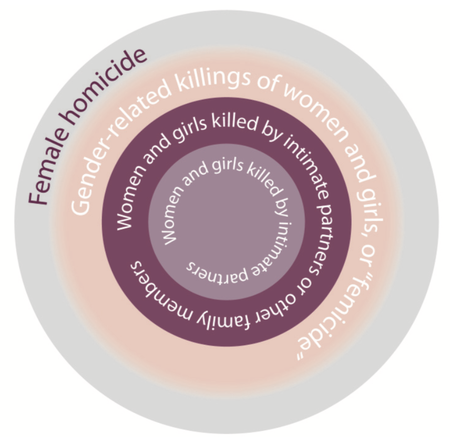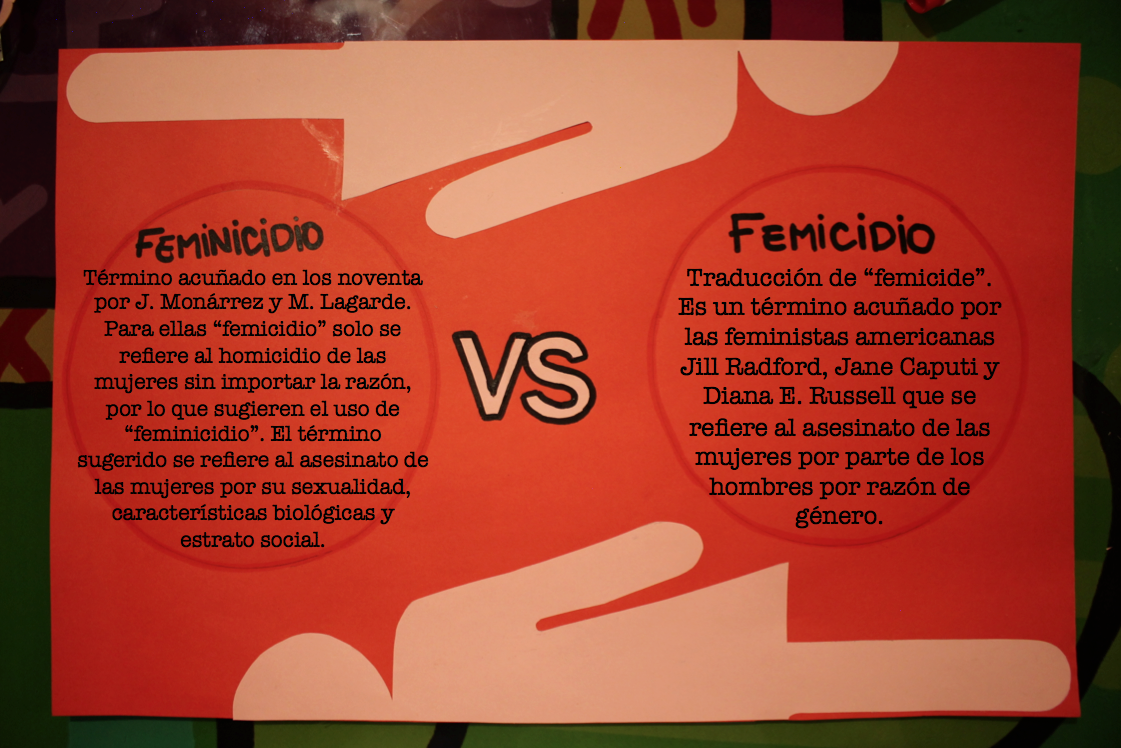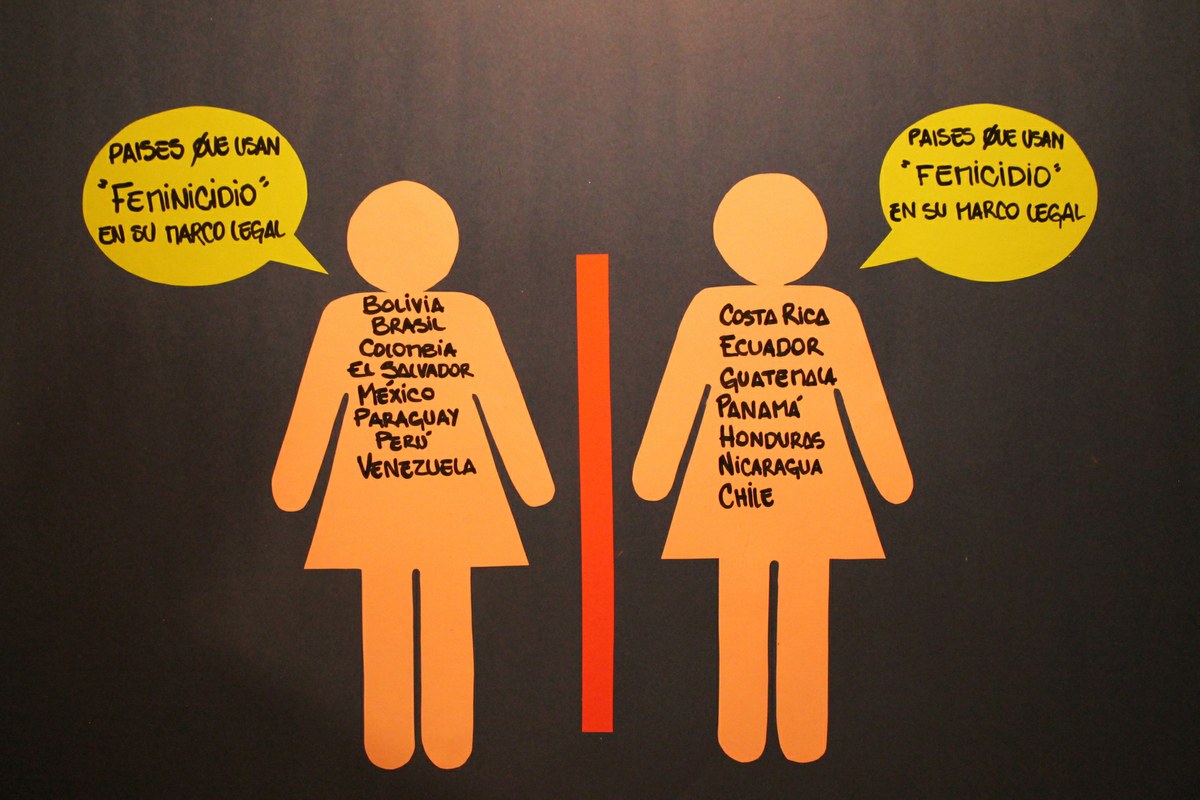Words, meanings, debates

In our research - with the aim of reconstructing different representations in various spaces of public discourse - we use the term femicide in a very broad and variable meaning according to the context of reference: on the one hand, for a mere recognition of the killings of women following voluntary homicide - regardless of the perpetrator's gender; on the other hand, for detailed analysis to help us distinguish the different types of female homicide, and therefore with reference to the relationships between the victim and the perpetrator and those that take place in the home..
In Italian, the term is now shared by many - both in specialist literature and in institutional and media discourse - but declined and used differently by specific social actors or in different contexts: for some of almost current use, for others an almost "technical" expression, for others still controversial or characterized by ideological excess. Furthermore, there are actually three, femicide, feminicide or even "femicide", with respect to which specialized literature or collective actors can be distinguished.
In Italy the difference between femicide and feminicide has been definied by Casa delle donne per non subire violenza:
On the controversial side, there is no lack of examples aimed at criticizing "feminist hegemony" on the subject, or to challenge the validity of a sort of "moral panic" according to some built on data and numbers of different interpretation, or to reiterate the excess of simplification operated by analyzes that want to bring the problem back only in a gender perspective, thus ignoring the complexity of the factors involved as well as the processes of social construction of the phenomenon.
At the international level the rapporto UNODC 2018 specifies:

Infographic realized by the United Nations Office on Drugs and Crime-Unodc, Global study on Homicide. Gender-related killing of women and girls, 2018
Some data from the same report:
Female homicides in the world

«An interweaving of stories of words born in different countries that have followed their own paths up to overlap today thanks to cultural movements that have invested at least the entire Western world», it's writen in the detailed report edited by Matilde Paoli in the site of the most famous Italian linguistic Academy.
Today attested as a neologism in various dictionaries and used in the media since the 21st century, the word femicide is the result of a progressive "ideological evolution", as well as of a mixture of linguistic derivation from English and Spanish, perhaps closer to Latin -American feminicide, widespread and supported by the Mexican militant anthropologist and sociologist Marcela Lagarde, but not even distant from the femicide introduced in English by Diana Russel in 1976. But it is above all the effect of a progressive awareness of a lethal implication of gender inequality.
Another literary "outcrop" of a word that only from the seventies of the twentieth century will encounter progressive "ideological evolution", dates back to 1694 to the work of another Italian active in Paris, Evaristo Gherardi, who satirically makes the character in mask, Mezzetin, say - analogue of Arlecchino - « Helas, Monsieur, elle est morte, et on m’avoit accusé de l’avoir tuée; et sans l’argent et les amis j’aurois été pendu pour un femmicide ». It's like to say "for so little", not even a murder, only a femicide ...! (Le Théâtre Italien ou Le recueil général de toutes les scènes françoises qui ont eté joüées sur le Théâtre-Italien de l'Hostel de Bourgogne; the blod is ours).
Accademia della Crusca also noticed another news detail in 1923 : « Il più truce delitto è l'ottimamente chiamato femminicidio commesso da un certo Pietro di Vicchio Fiorentino » (“Vita e pensiero”- Vol. 9, 1923, p. 472; the blod is ours), the Italian antecedent of the subsequent debates by Maria Adele Teodori, who in a 1977 article tackles with a resolute air even the assimilation of rape - controversial for some - to extreme male violence against women:

The diversity of meanings and variants of the femicide / feminicide terms is recognized, such as the - very subtle - evoked for example by Diana Russell which indicates the difference between her definition of femicide as "killing of females by males because they are females" and the institutional one of the UN "killing a woman because she is a woman".
Taking inspiration from the indications of Rashida Manjoo, Special Rapporteur on violence against women at the UN from 2009 to 2015, the article indicates the phenomenon as the most extreme manifestation of the forms of violence existing against women. The cases of femicide are not to be considered isolated and sudden incidents, but would be the final act of a continuum of violence perpetrated against a woman.
A list of categories is also proposed which greatly broadens what is included in the phenomenon, distinguishing forms directly and indirectly caused, of a voluntary or malicious nature.
Among the forms of direct feminicide: killings following a violence perpetrated by the partner; murders related to witchcraft; homicides related to honor; murders related to gender identity and sexual orientation; murders related to ethnic identity and their origins.
The deaths caused by clandestine abortions or harmful medical practices fall under the indirect forms of femicide; deaths related to human trafficking, drug dealing and organized crime; deaths from starvation, HIV or ill-treatment, as well as those resulting from deliberate acts of omission by the state. New forms are not excluded (eg extremism, fundamentalism).
There is no explicit mention, instead, of the debate on the so-called "intersectionality", which according to some authors would require an in-depth study of the close combination of race and gender, as well as class factors, both of the victims and the perpetrators.

Canadian Femicide Observatory for Justice and Accountability - Observatoire canadienne du fémicide pour la justice et la responsabilité
The historical stages of the term are also varied, especially when considered in the versions used by feminists of Anglo-Saxon or Latin-American origin. The Canadian Observatory proposes here a brief excursus on the origins of the Anglo-Saxon femicide term, whose use is traced back to 1801 for the first time. The first documented use is a quote in a book by John Corry, Satirical View of London at the Commencement of the Nineteenth Century (it will then be found included in the 1848 edition of the Law Lexicon of J.JS.Wharthon with the meaning of "killing a woman").
But his introduction into public discourse dates back to 1976: the feminist scholar and activist Diana Russel uses the term femicide in front of the International Criminal Tribunal against Women, bringing attention to violence and discrimination against women; then in 1990, together with Jane Caputi, he will publish the famous Femicide article: speaking the unspeakable.
Infographics from the project Periodismo Digital de la Universidad de Los Andes

